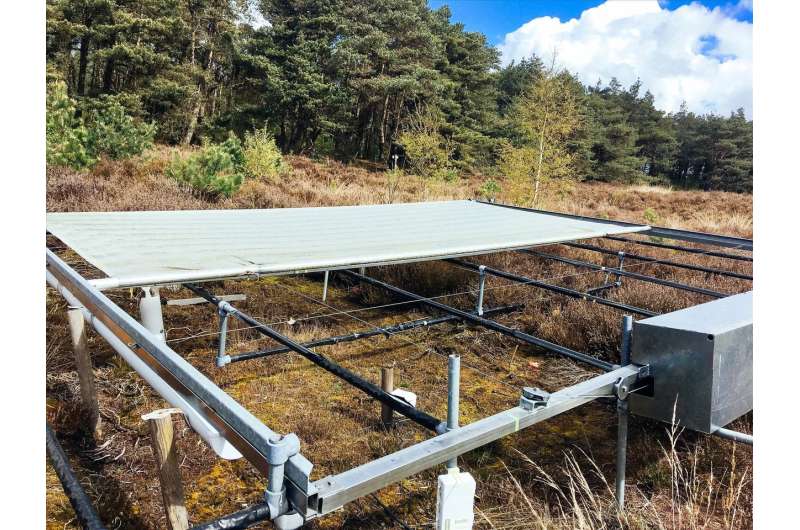Photos shows the long-term drought experiment in the Netherlands from where the soils were sampled. A rain curtain has excluded precipitation from entering the soil during the summer for 18 years, simulating the drought. (Photo: Evy de Nijs
Researchers at Lund University in Sweden, in collaboration with colleagues from the University of Amsterdam, examined how 18 years of drought affect the billions of vital bacteria that are hidden in the soil beneath our feet. The results show that this type of extreme weather determines how soils respond to future climate change.
According to the study, microorganisms that have been subjected to long-term drought find it easier than other microbes to recover when moisture in the soil increases again.
"Our results show that the historical climate will affect how microorganisms respond and contribute to climate change in the future. Bacteria adapted to drought could slow the rate of carbon loss from soils," explains Lettice Hicks, biologist at Lund University.
In the study, she and her colleagues examined soil that had been subjected to long-term drought – in this case 18 years of experimental summer drought. The aim was to study how the microorganisms cope and how they recover.
When the soil is moist, the bacteria are active, breaking down organic material. This process provides essential nutrients for plants, and, while a proportion of the carbon from organic matter is stored in the soil as bacterial tissue, some is released into the air as carbon dioxide.
Photos shows the long-term drought experiment in the Netherlands from where the soils were sampled. A rain curtain has excluded precipitation from entering the soil during the summer for 18 years, simulating the drought. (Photo: Evy de Nijs
During drought, however, the bacteria stop growing and no longer perform their important task in the ecosystem. When rain eventually falls and the soil regains moisture, the bacteria begin to work again. The result is an immediate increase in emissions of carbon dioxide into the air, but as the bacteria recover very quickly, the fraction of carbon released from the soil decreases.
"The carbon balance is affected, as the growth of bacteria keeps carbon in the soil. These findings suggest that microbial communities can adapt to changing climatic conditions, and this might slow the rate of carbon loss from soils," concludes Lettice Hicks.
More information: Evy A. de Nijs et al. Soil microbial moisture dependences and responses to drying-rewetting: the legacy of 18 years drought, Global Change Biology (2018). DOI: 10.1111/gcb.14508
Journal information: Global Change Biology
Provided by Lund University

























